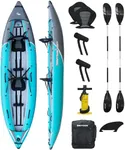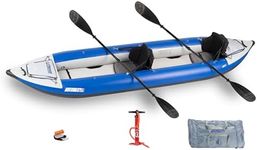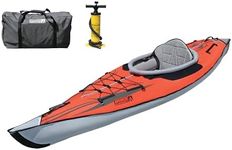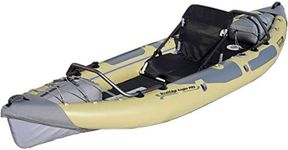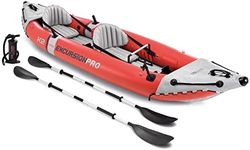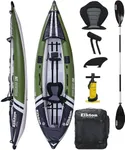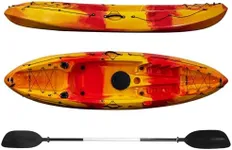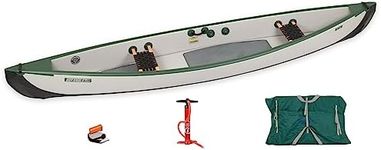Buying Guide for the Best Inflatable Canoes
Choosing the right inflatable canoe can greatly enhance your paddling experience, whether you're planning a leisurely trip on a calm lake or an adventurous journey down a river. Inflatable canoes are versatile, portable, and easy to store, making them a popular choice for many paddlers. To find the best fit for you, it's important to consider several key specifications that will impact the canoe's performance, durability, and suitability for your needs.MaterialThe material of an inflatable canoe is crucial as it affects durability, weight, and performance. Common materials include PVC, Hypalon, and Nitrylon. PVC is lightweight and affordable but may not be as durable as Hypalon, which is known for its resistance to UV rays and chemicals. Nitrylon is eco-friendly and durable but heavier. If you plan on frequent use or rough conditions, opt for Hypalon or Nitrylon. For occasional use in calm waters, PVC may suffice.
Weight CapacityWeight capacity indicates how much weight the canoe can safely carry, including passengers and gear. This is important to ensure stability and performance on the water. Canoes with lower weight capacities (under 400 lbs) are suitable for solo paddlers or light loads. Medium capacities (400-600 lbs) are good for two people and some gear. Higher capacities (over 600 lbs) are ideal for multiple passengers or heavy loads. Choose based on the number of people and amount of gear you plan to carry.
Size and DimensionsThe size and dimensions of the canoe affect its stability, speed, and maneuverability. Longer canoes (over 12 feet) tend to track better and are faster, making them suitable for open water and longer trips. Shorter canoes (under 12 feet) are more maneuverable and easier to handle, ideal for rivers and tight spaces. Width also matters; wider canoes offer more stability but may be slower, while narrower canoes are faster but less stable. Consider your paddling environment and skill level when choosing the size.
Air ChambersAir chambers are separate compartments that hold air, providing buoyancy and safety. More air chambers mean better safety, as the canoe can stay afloat even if one chamber is punctured. Canoes typically have 2 to 4 air chambers. For added safety, especially in rough waters or remote areas, choose a canoe with more air chambers. For calm, controlled environments, fewer chambers may be sufficient.
Setup TimeSetup time refers to how long it takes to inflate and prepare the canoe for use. This can vary based on the design and included pump. Quick setup times (under 10 minutes) are convenient for spontaneous trips and frequent use. Longer setup times (over 10 minutes) may be acceptable if you prioritize other features like durability or performance. Consider how often you plan to use the canoe and how much time you're willing to spend on setup.
AccessoriesAccessories can enhance your paddling experience and convenience. Common accessories include paddles, pumps, repair kits, and carrying bags. Some canoes come with these accessories, while others require separate purchases. If you're new to paddling, a package with all necessary accessories can be beneficial. Experienced paddlers might prefer to choose their own accessories based on personal preferences. Consider what you need to get started and what will make your trips more enjoyable.



